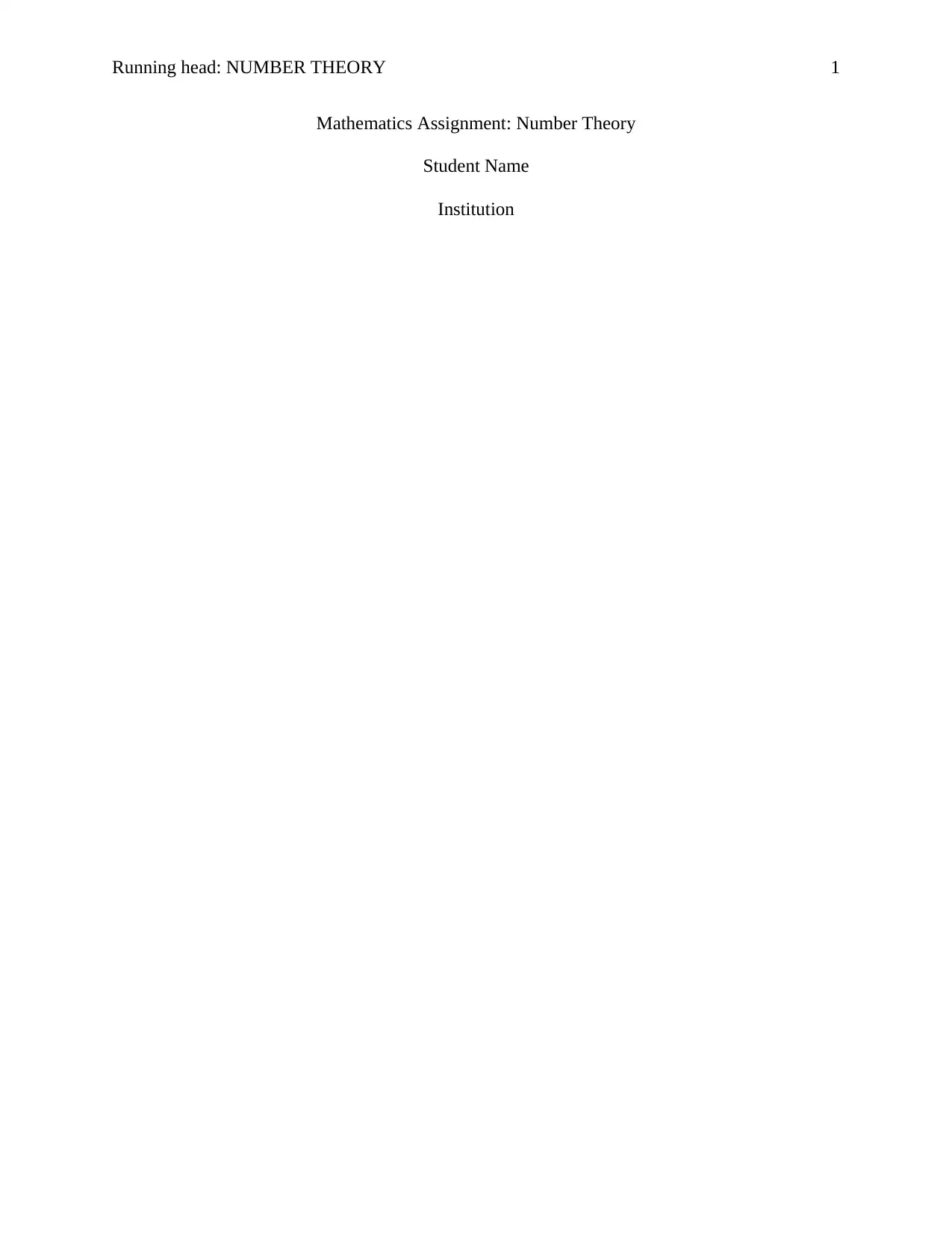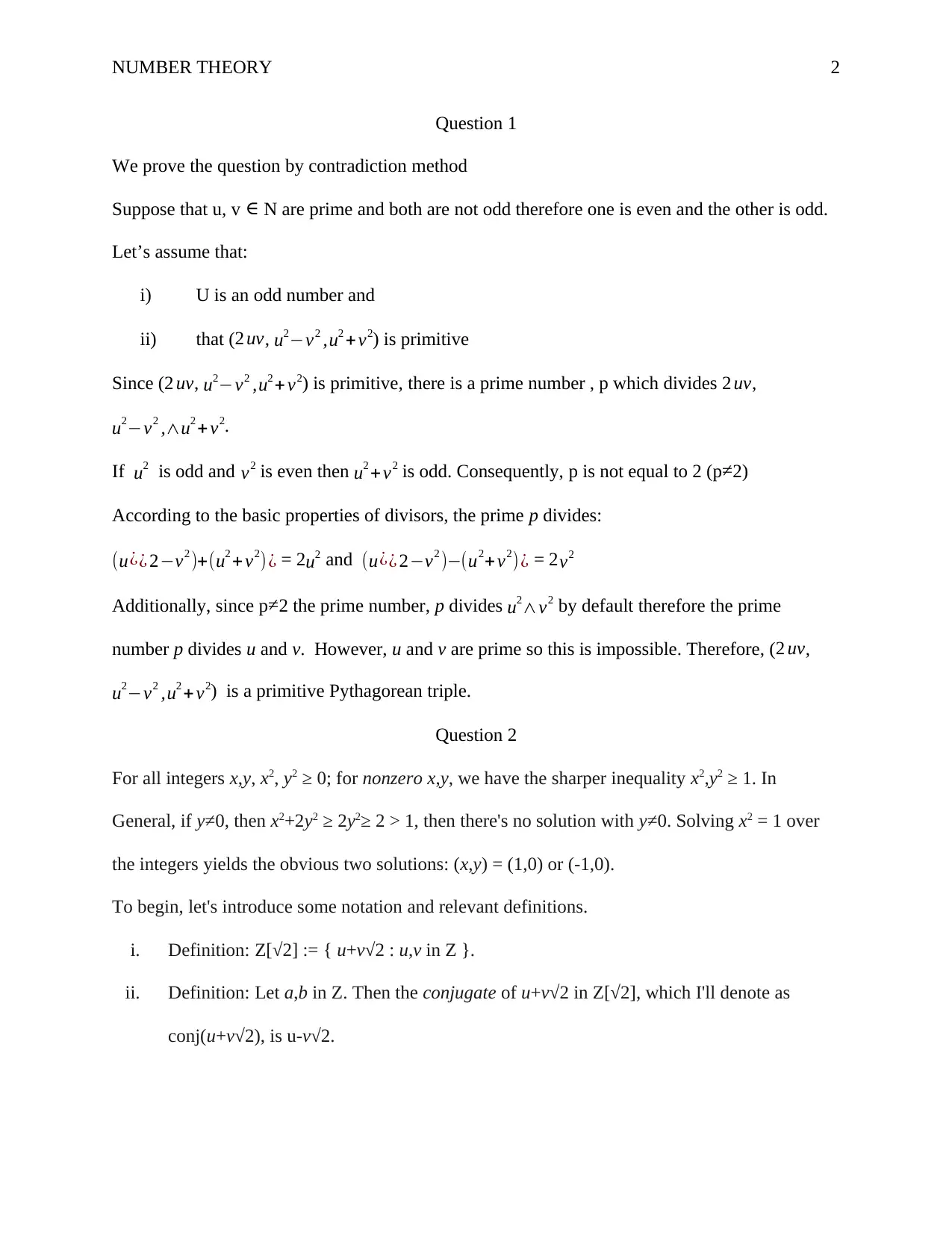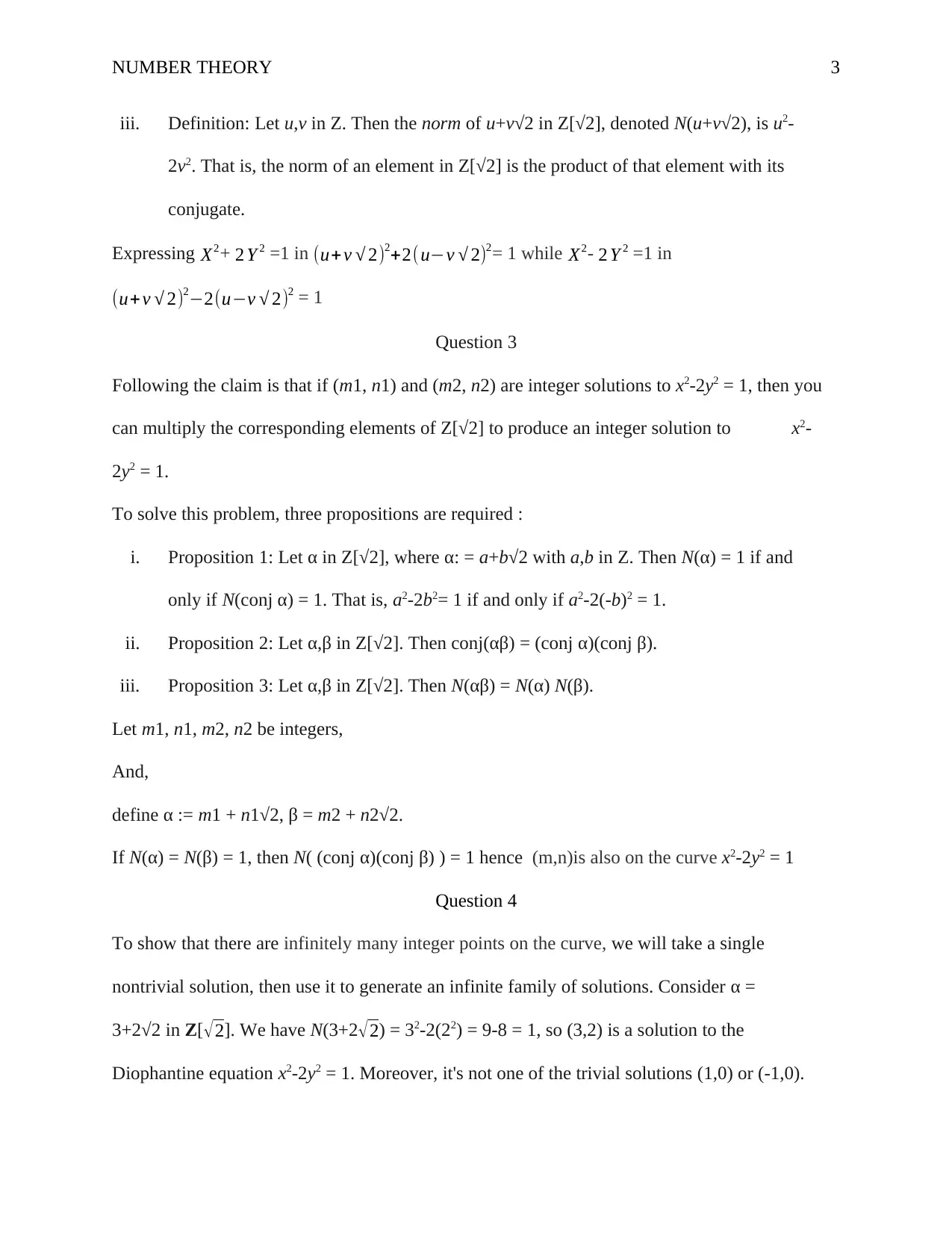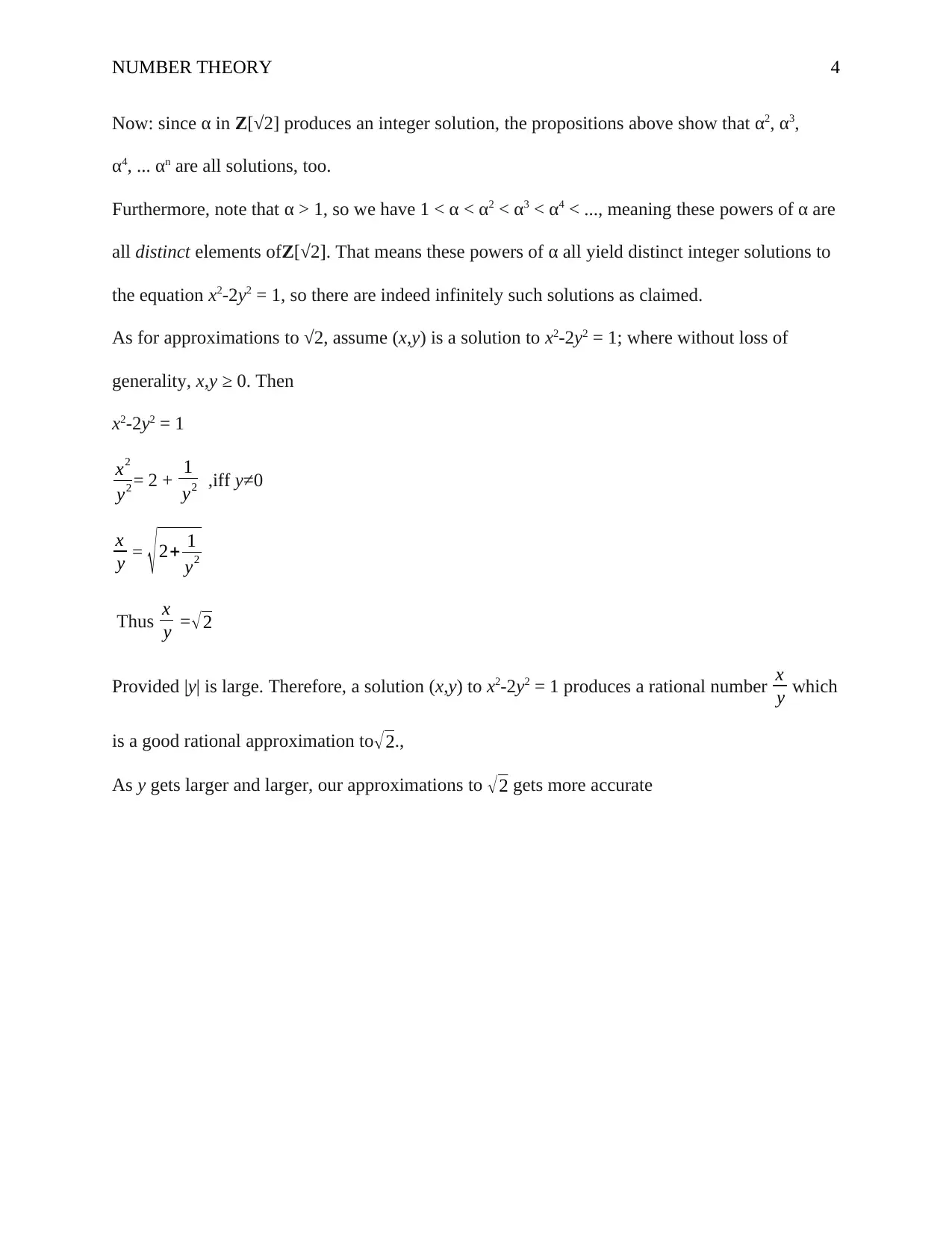Mathematics Assignment: Number Theory
VerifiedAdded on 2023/01/18
|5
|1089
|90
AI Summary
This document is a mathematics assignment on number theory. It includes proofs using the contradiction method, solving the equation x^2-2y^2=1, and demonstrating the existence of infinitely many integer points on the curve. The references used in this assignment are from the book 'Elementary Number Theory' by D. Burton.
Contribute Materials
Your contribution can guide someone’s learning journey. Share your
documents today.
1 out of 5








![Ideals of Z[x] with xZ[x]⊆J⊆Z[x]](/_next/image/?url=https%3A%2F%2Fdesklib.com%2Fmedia%2Fimages%2Ftv%2Fc782680a607c4d67ba8125c85b57aee0.jpg&w=256&q=75)


![[object Object]](/_next/static/media/star-bottom.7253800d.svg)